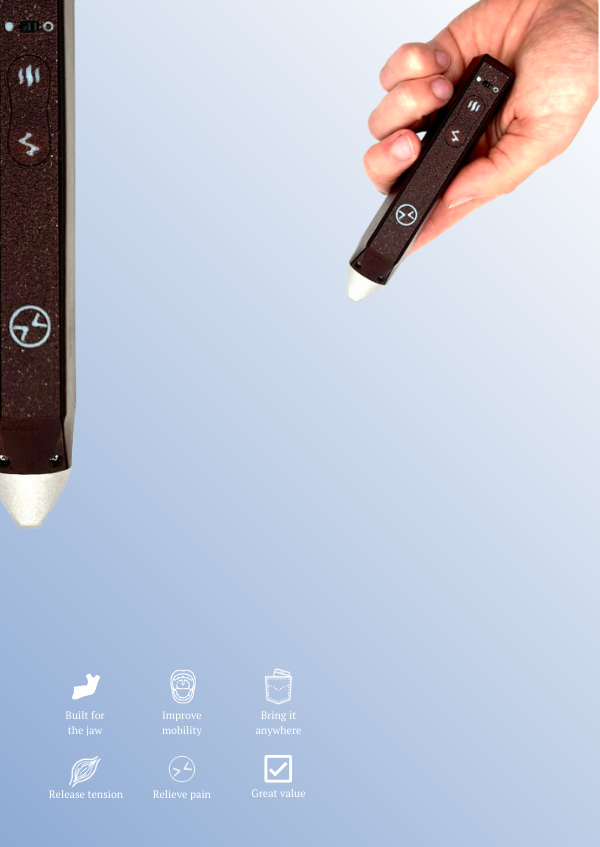Easiest Exercises for TMJ Disorders (Instant Relief)

The temporomandibular joint (TMJ) allows for the movement of your jaw, enabling you to open and close your mouth. Pain and discomfort around your jaw or near your ears may indicate a TMJ disorder. Although this condition often resolves on its own, engaging in specific TMJ exercises can help alleviate the pain.
TMJ Stretches and Exercises
Initial Approach to TMJ Pain
When experiencing active TMJ pain and discomfort, strenuous exercises might not be very helpful. Instead, use relaxation techniques and gentle stretching to help ease the pain. Once the initial discomfort subsides, you can start TMJ strengthening exercises to prevent the pain from returning.
Strengthening Exercises
To help manage and prevent TMJ discomfort, these strengthening exercises involve opening and closing your mouth with some resistance.
Resisted Opening Exercise:
-
Place one thumb under your chin and gently push downward.
-
Slowly open your mouth against this resistance, keeping it open for a few seconds before slowly closing it.
Resisted Closing Exercise:
-
Keep your thumb under your chin.
-
Place your index finger on the ridge between your chin and lower lip.
-
Gently push while closing your mouth.
Stretching Exercises
Gentle stretching of your jaw and joint area can also prevent TMJ pain from returning. Be cautious, and stop the exercises if you experience pain.
-
Relax your jaw with your teeth slightly apart.
-
Slowly open your mouth as wide as possible while looking up with your eyes. Hold for a few seconds, then slowly close your mouth.
-
With your mouth closed, move your jaw to the left while looking left with your eyes. Avoid turning your neck or head. Hold for a few seconds, then return to the center. Repeat on the opposite side.
Rocabado's 6x6 Exercise Routine
Rocabado 6x6 exercises are well-known physical therapy routines for TMJ pain relief, involving a series of jaw exercises:
-
Rest Position of the Tongue: Place the tip of your tongue on the roof of your mouth, applying gentle pressure.
-
Control of TMJ Rotation: Open and close your jaw while gently pressing the tip of your tongue on the palate.
-
Rhythmic Stabilization Technique: Place two fingers on your chin. Open and close your jaw while pressing your tongue on the palate.
-
Axial Extension of the Neck: Lift and lower your chin as if nodding.
-
Shoulder Posture: Squeeze your shoulder blades together while lifting and lowering your chest.
-
Stabilized Head Flexion: Bring your chin towards your neck (creating a "double chin"), then push it out again.
Kraus' TMJ Exercises
Physical therapist Steve Kraus developed these exercises to limit the activity of the chewing muscles:
-
Tongue Position at Rest: Place the tip of your tongue on the roof of your mouth, just behind your front teeth.
-
Teeth Apart: Keep your upper and lower teeth apart to help relax your jaw.
-
Nasal-Diaphragmatic Breathing: Breathe through your nose to better position your teeth and tongue.
-
Tongue Up and Wiggle: Place your tongue on the palate, then move your jaw side to side.
-
Strengthening: Place a stack of tongue depressors between your upper and lower teeth. Use enough depressors to give your jaw a good stretch. Hold for up to five minutes a few times a day.
-
Tooth and Bite: Place an index finger on an upper canine tooth and try to bite it. Repeat five to 10 times, up to eight times a day.
Relaxation Exercises
If your TMJ pain and discomfort are stress-related, incorporate relaxation techniques to ease tension. The Mayo Clinic recommends breathing exercises to help reduce jaw muscle pressure. Inhale for a count of five or ten, then slowly exhale. While not a form of exercise, this technique can help reduce stress and relieve TMJ-related discomfort.



